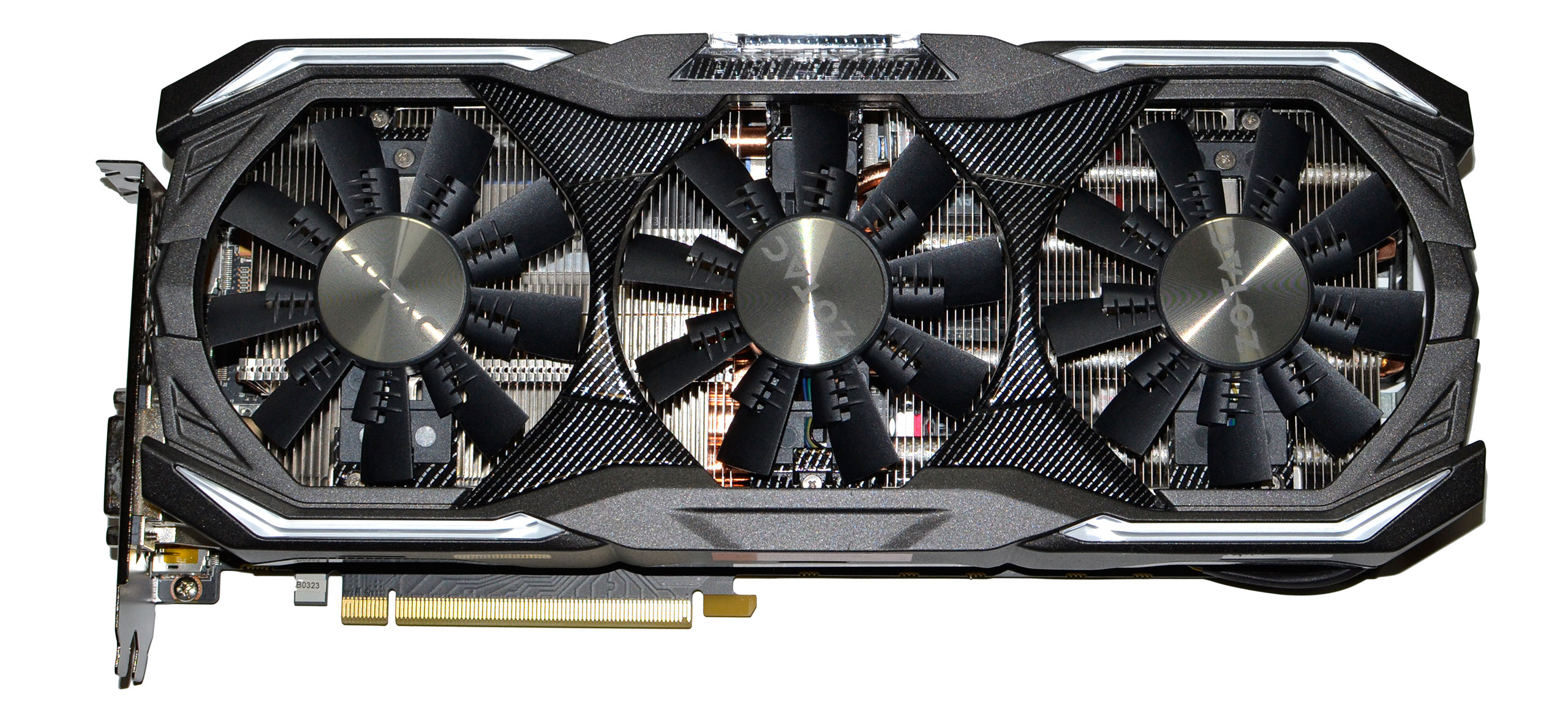Our Verdict
Big, bold, and beautiful, the Zotac 1080 Amp Extreme is literally the 800 pound gorilla of graphics cards.
For
- Awesome factory overclock
- Excellent performance
- Runs very quiet
Against
- Might not fit in your case
- Weight is a concern
- Uses more power than stock 1080
PC Gamer's got your back
Nvidia's Pascal GPUs are a hot commodity, boasting the highest performance you can possibly get from a modern graphics card. From the obscene Titan X to the ultra-high-end GTX 1080, and down to the GTX 1070 and GTX 1060, Nvidia wins the performance crown at each price point. However, AMD's newest Radeon RX GPUs start with the mainstream RX 480 priced similarly to the GTX 1060 and go down from there, so we're still waiting for something to replace the Fury X. Demand for these new cards drove up prices, but they're finally starting to come down. Into this mix, we're now starting to receive some of the custom designed cards that push the limits beyond the reference models.
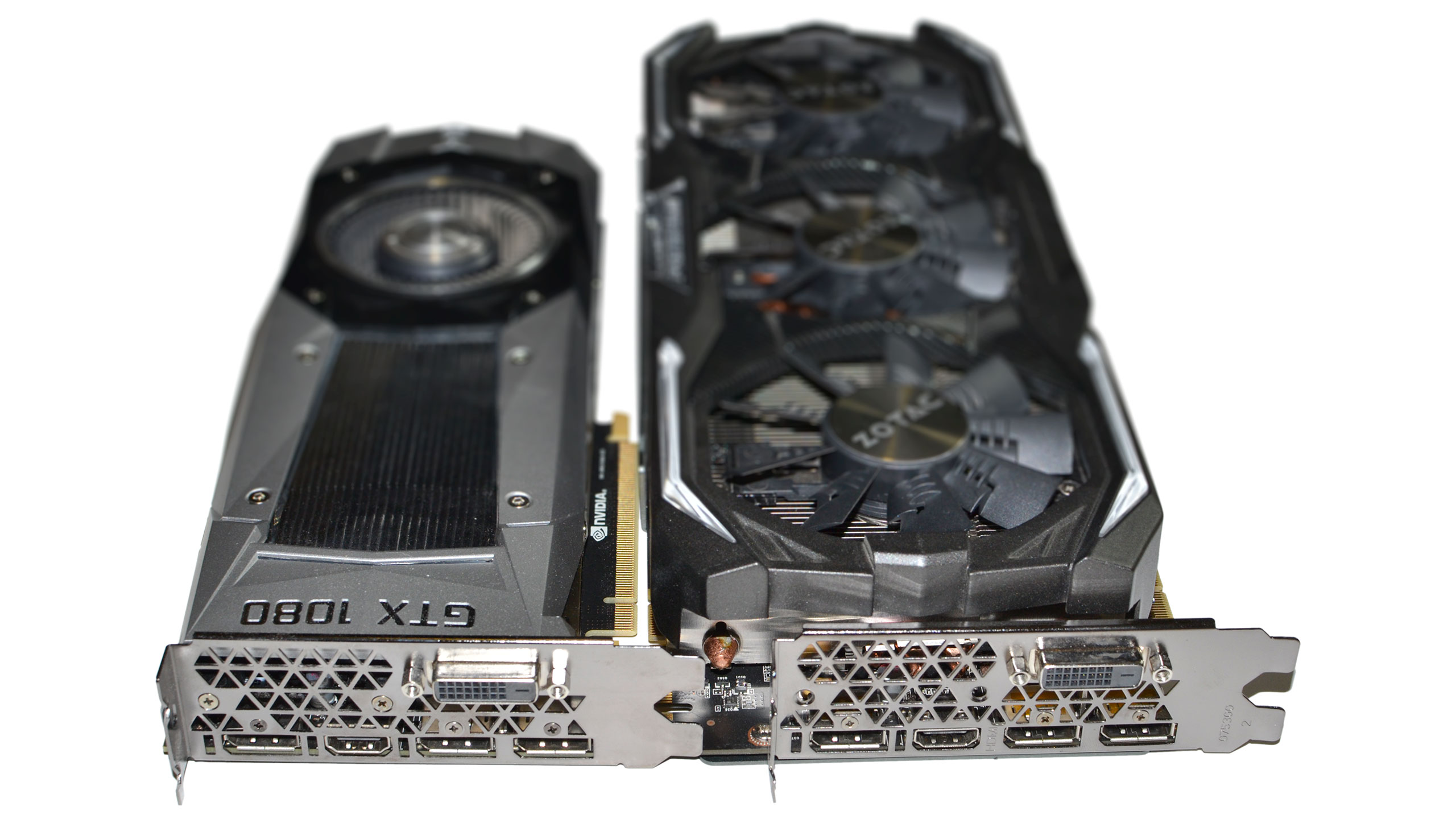
Behold, the Zotac GTX 1080 Amp Extreme, a triple-wide juggernaut that weighs almost twice as much as the 1080 Founders Edition. Zotac sent over their unholy behemoth of a card to prove that bigger actually is better. The card measures 325mm x 148mm x 69mm (12.79" x 5.83" x 2.72"), compared to the Founders Edition's 267mm x 125mm x 38mm (10.50" x 4.92" x 1.50"). We've looked at a few of these Zotac cards in the past, and with some people saying cooling is a concern for the GTX 1080, we wanted to unleash the hounds and see what happens when a company pulls out all the stops.
The core GTX 1080 specs haven't changed, but Zotac is pushing the limits hard and they've taken a few extra liberties with their card's design. Along with the massive cooler, the Amp Extreme sports not one but two 8-pin PEG connections. That's more than a little overkill, considering the stock 1080 is designed to use 180W, and a single 8-pin plus the x16 slot are able to provide 225W combined. Zotac's card could in theory draw up to 375W of power from the various connections, and in practice it uses 75-90W more power than a stock 1080 FE. Zotac lists the power draw at 270W, which is in line with what I measured. The dual 8-pin connections might not be strictly necessary (8-pin + 6-pin would do), but they're there to provide a bit of wiggle room if you need it.
Naturally, this card comes overclocked, and it's about the highest factory OC you'll find on the GTX 1080. The base clock has been pushed from 1607MHz up to 1771MHz, with a boost clock of 1911MHz; the GDDR5X memory is also clocked at 10.8 GT/s (versus 10 GT/s stock), which many other factory overclocked cards don't provide. (Asus has a card clocked at 1784-1936MHz, but with no GDDR5X overclock.) The Amp Extreme also appears to be tuned to stay closer to maximum performance, no doubt thanks to the improved power delivery and cooling, and in practice I frequently saw the core clocks running at 2GHz or more during testing.
I like to think of the Amp Extreme as Zotac's take on muscle cars, applied to the world of graphics cards. This isn't about finesse or efficiency; it's all about raw power, earth shaking performance, and setting new speed records. But that doesn't mean the card has to get loud, and thanks to the triple fans the card won't even burst your eardrums with the fan speed cranked to 100 percent. It won't normally go there regardless, and at idle the fans will often stop spinning entirely, but if it needs to move some air it can do so.
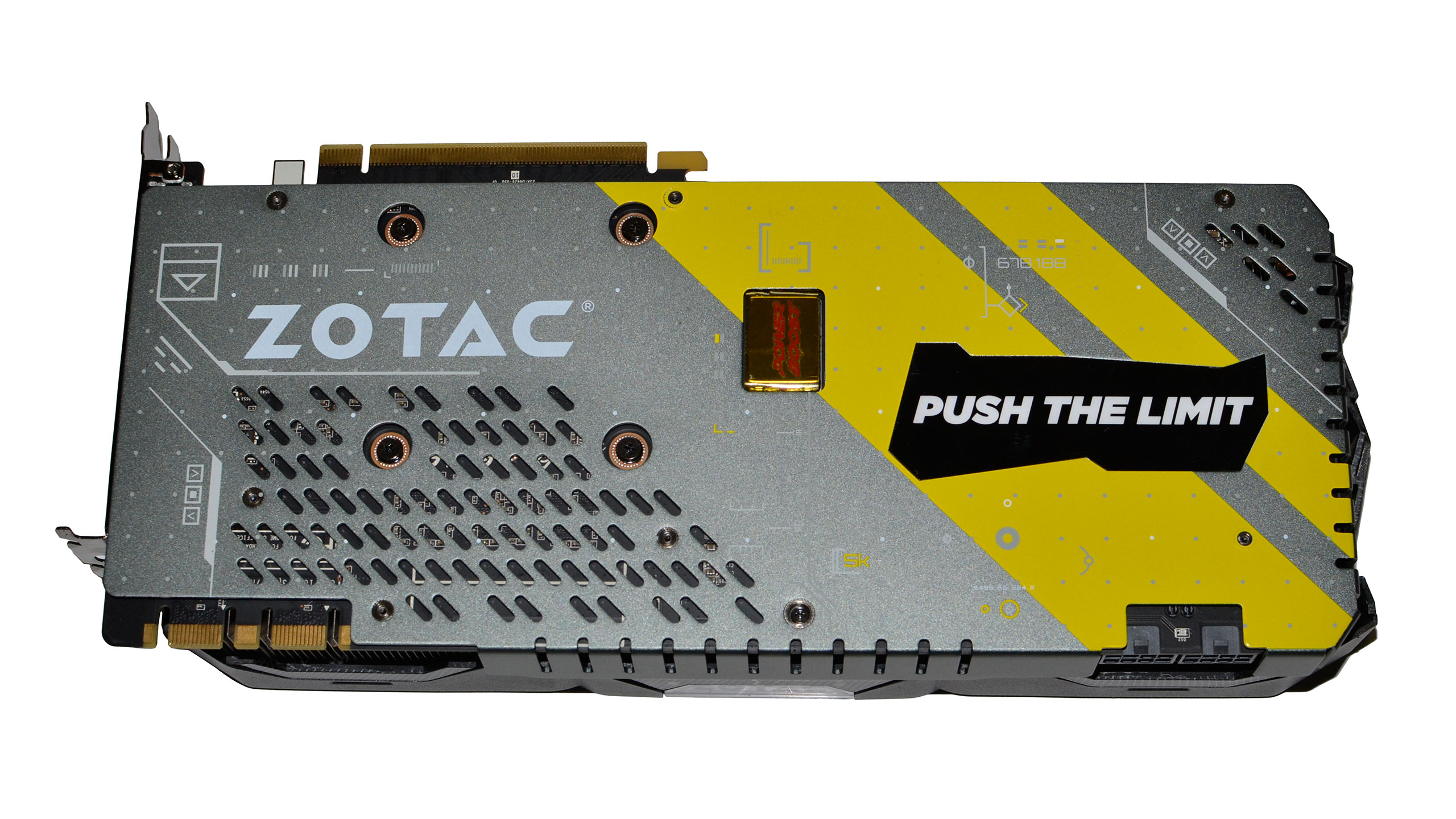
CPU: Intel Core i7-5930K @ 4.2GHz
Mobo: Gigabyte GA-X99-UD4
RAM: G.Skill Ripjaws 16GB DDR4-2666
Storage: Samsung 850 EVO 2TB
PSU: EVGA SuperNOVA 1300 G2
CPU cooler: Cooler Master Nepton 280L
Case: Cooler Master CM Storm Trooper
OS: Windows 10 Pro 64-bit
Drivers: Nvidia 372.70
Burning rubber
I'm using my standard testbed as usual, which consists of an overclocked 4.2GHz i7-5930K. Despite the overclock, however, the CPU is becoming a bit of a bottleneck for the latest graphics cards, particularly at lower resolutions. Not that I'd suggest anyone actually pick up a GTX 1080 with the intent of gaming at 1080p, but should you do so be aware that your CPU is likely to hold you back.
The gaming test suite is the same set of sixteen games I've used for the past few months, including a collection of older games that are well established in the benchmarking world and some newer releases. Games with DirectX 12 and Vulkan support are also present, specifically Ashes of the Singularity, Doom, Hitman, and Total War: Warhammer. However, Warhammer performs substantially worse on Nvidia cards in DX12 mode, so I've used DX11 for Nvidia cards—you can see more on how performance stacks up in my Warhammer Benchmarked article. Meanwhile Rise of the Tomb Raider's DX12 performance is worse on both Nvidia and AMD cards, so I've stuck with DX11 there as well. The other three games all use the low-level API.
I'm going to bypass talking about each individual chart in detail and simply refer interested readers to the gallery below. The short summary is that Zotac's Amp Extreme claims the top spot in each and every chart, typically besting the stock 1080 FE by 10-15 percent, with a few instances where the card is 20-25 percent faster. In short, this is a card designed to handle 1440p and 4K resolutions, in many cases even pushing well beyond the typical display refresh rate.
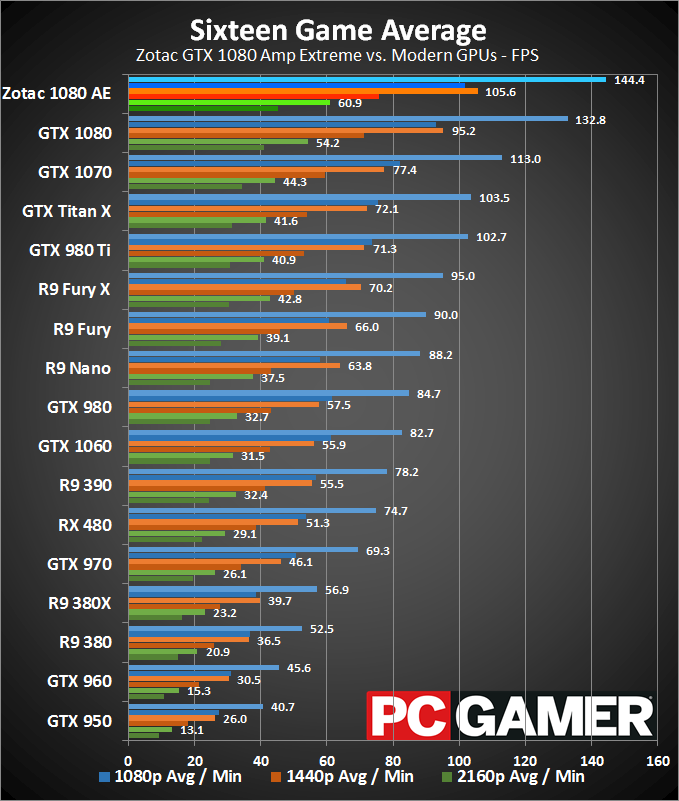
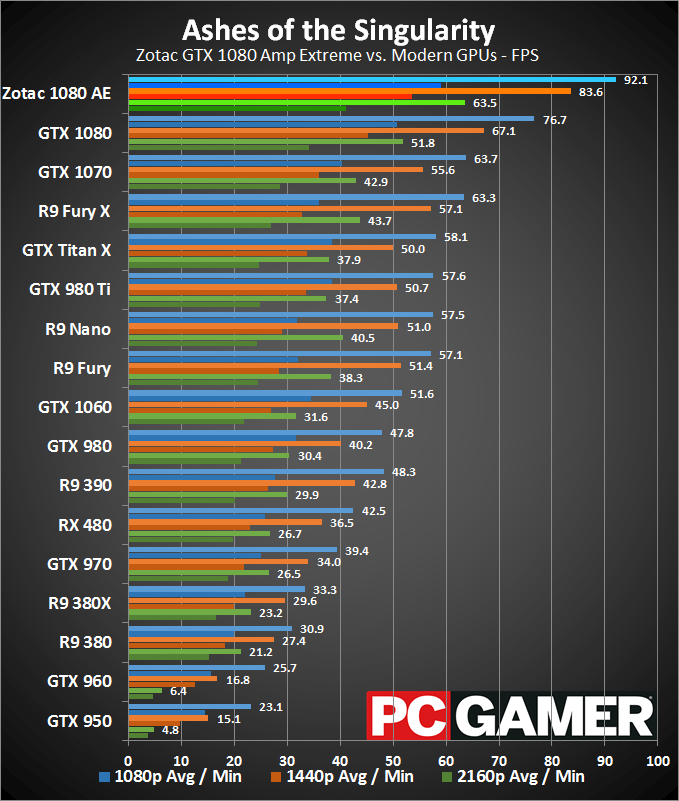
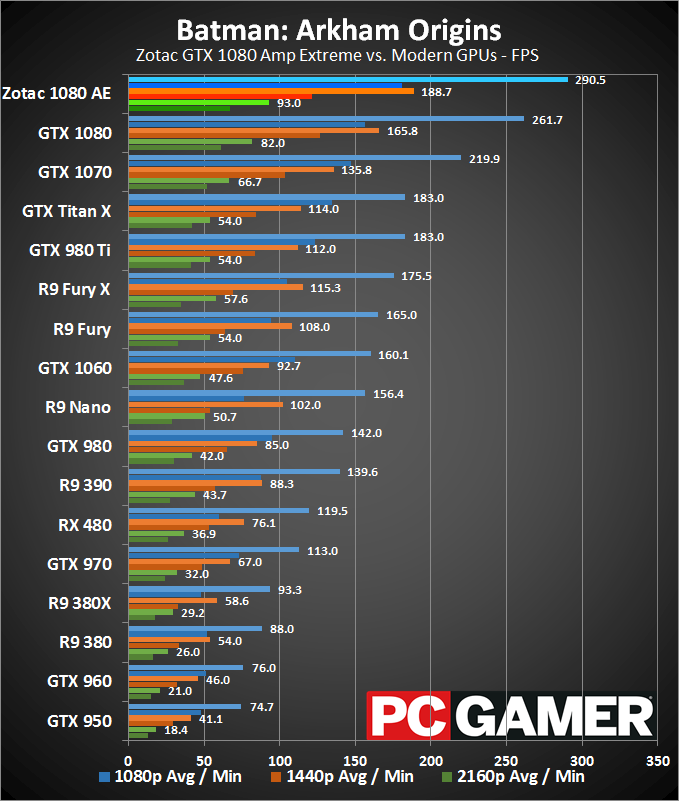
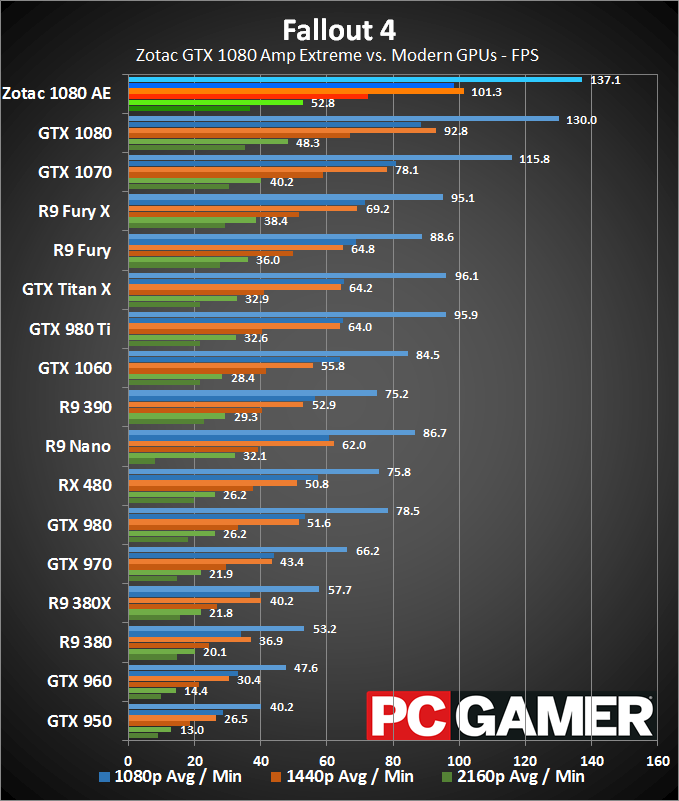


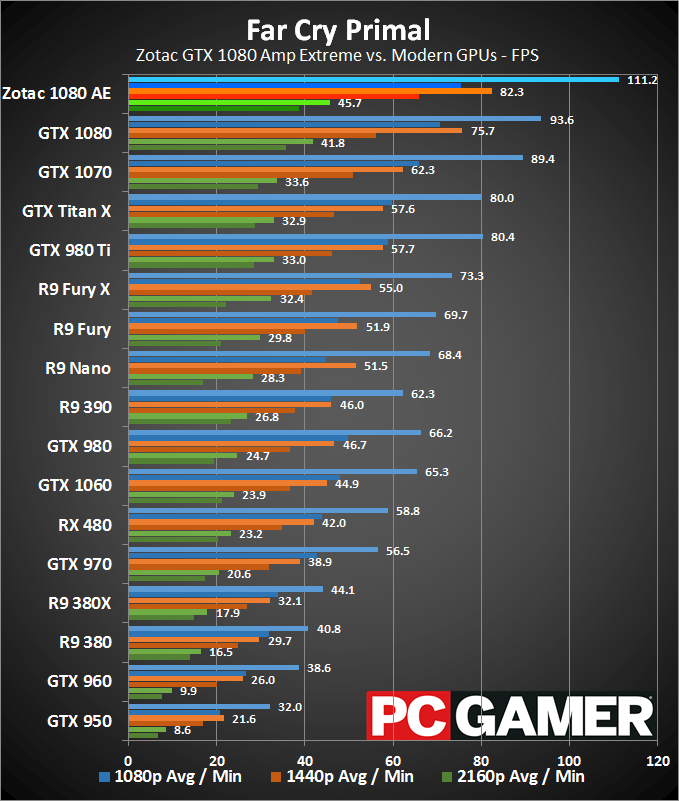
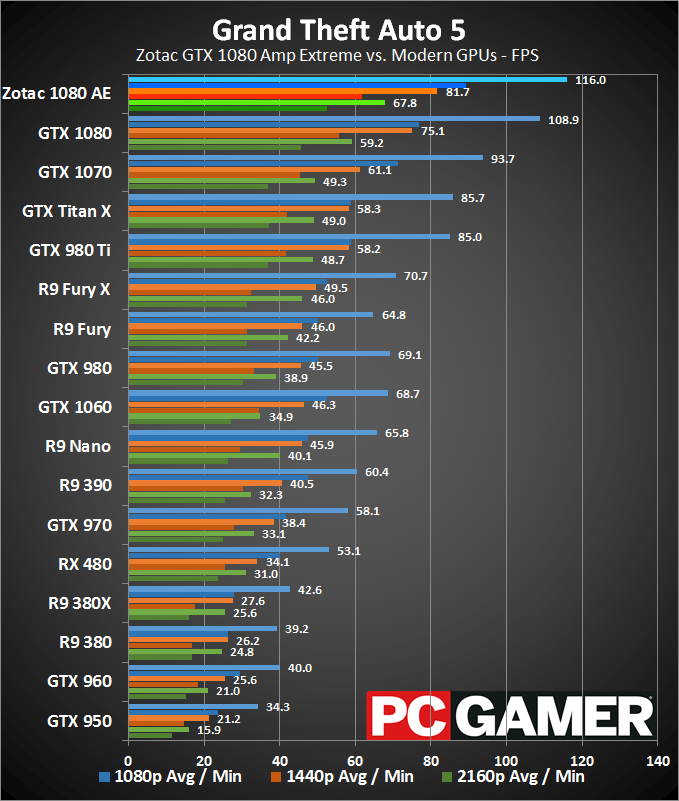
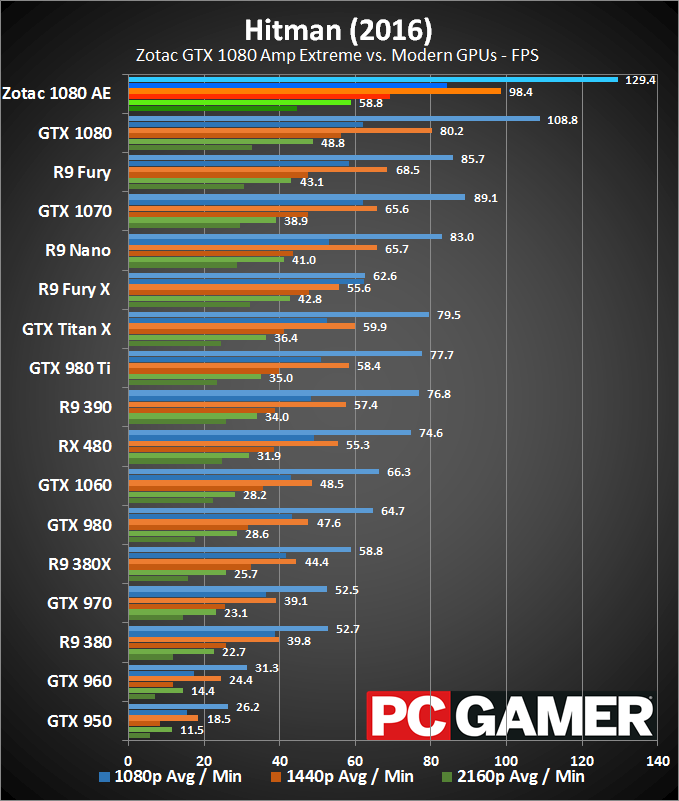
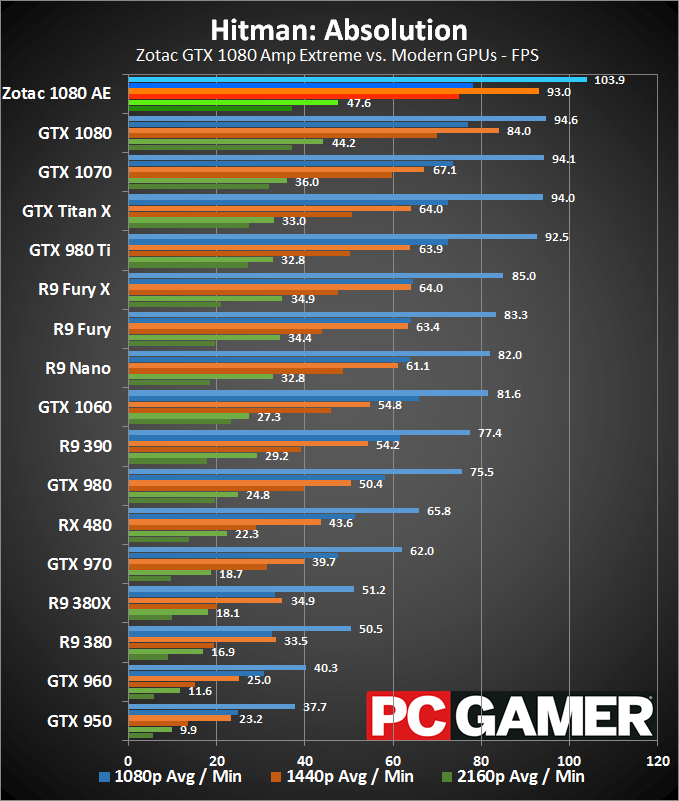
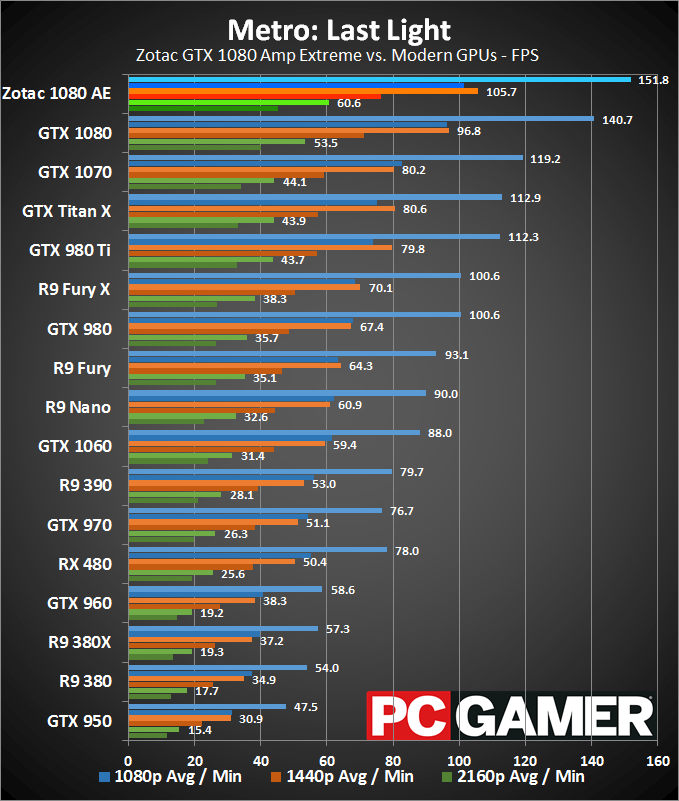
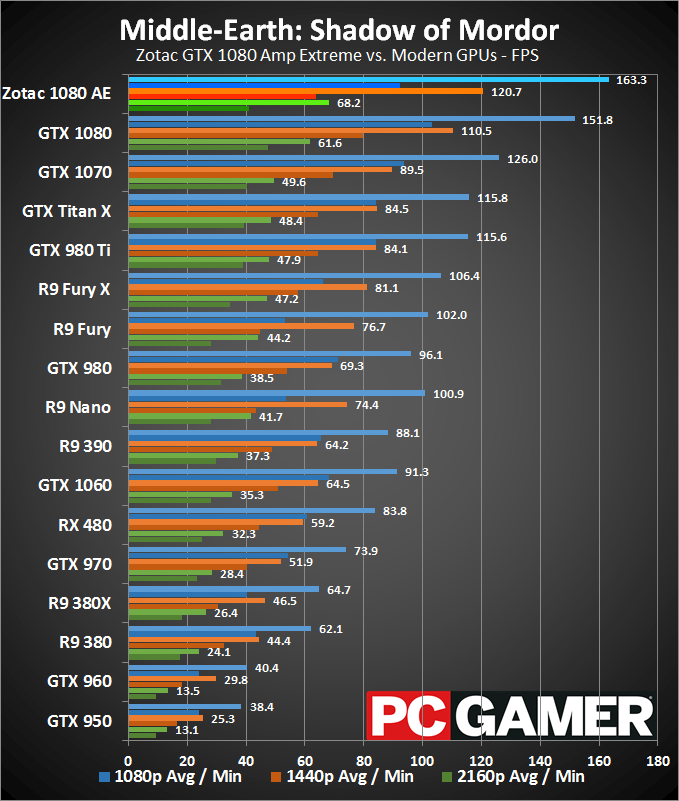
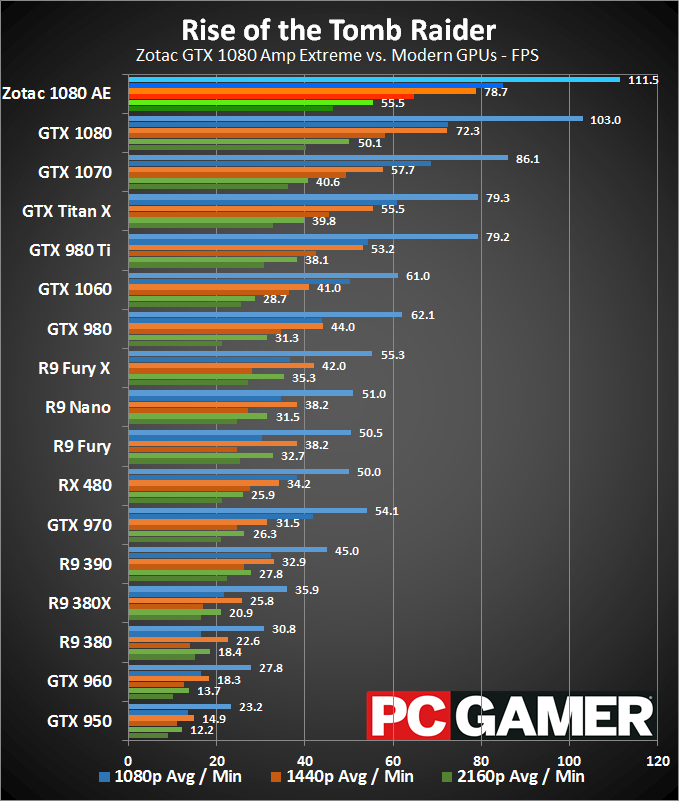
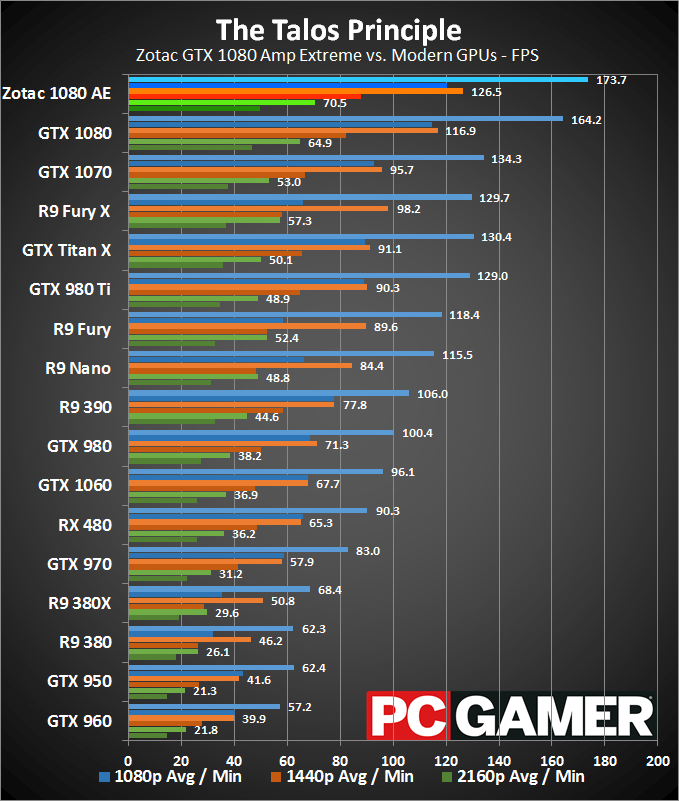
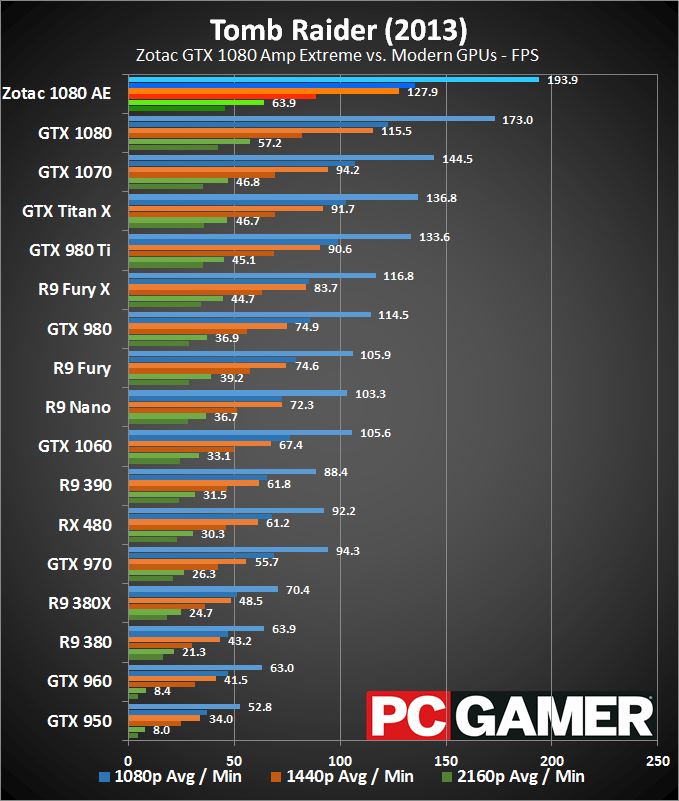
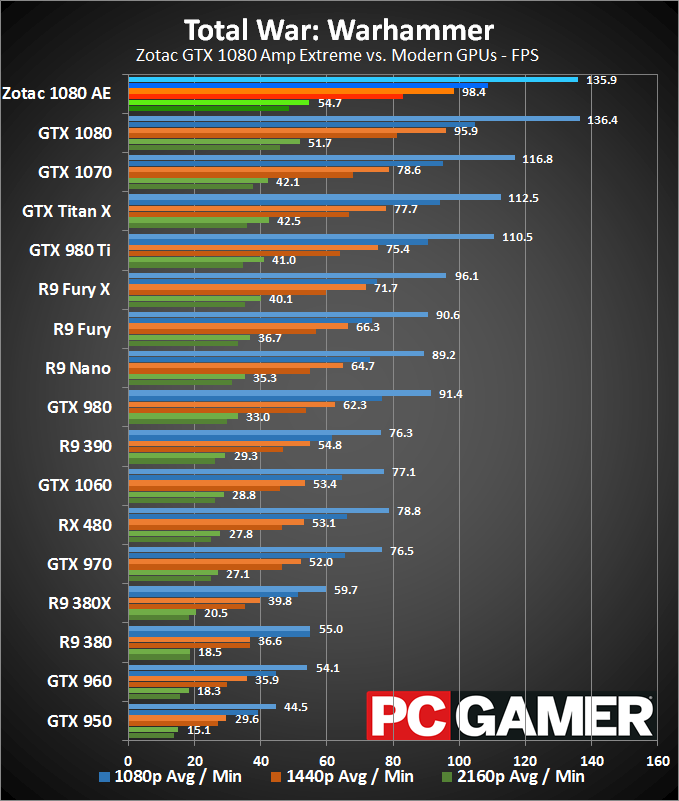
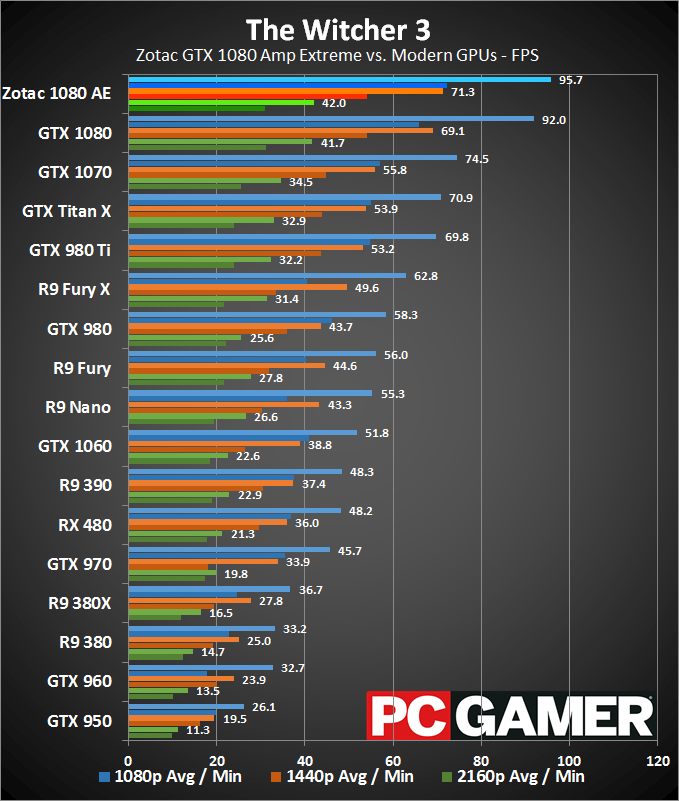
One thing the Amp Extreme won't do—besides its inability to fit into smaller cases—is play well with SLI. Two of the cards in SLI will use up nearly all of the expansion slot space even in larger cases, leaving just one slot open in a standard ATX chassis. But it's not just that; let's say you happen to have a 'normal' GTX 1080 FE (like me) and you want to put it in SLI with the Amp Extreme. The height of the Zotac card actually means the SLI connectors won't line up very nicely with other 1080's, so using an HB SLI bridge could pose problems. Short of special case designs to accommodate the massive girth of this card, it's not something I'd recommend for dual-GPU use. But it is the fastest single-card 1080 around right now.

Redlined
Last year, I had a chance to check out Zotac's GTX 980 Ti Amp Extreme. That card had a 25 percent core overclock, which was higher than I could go with a reference 980 Ti. I was able to take that starting point and add on another 50Mhz to the core, and over 1000MHz to the GDDR5 speeds. The Founders Edition GTX 1080 seemed to have plenty of headroom on its GDDR5X, so I was curious to see how far I could push things with the Amp Extreme.
Turns out the card is already pretty close to tapped out on core clocks. I could add another 25MHz using EVGA's Precision X 16 utility, but more than that would invariably lead to crashes and lockups. It seems the bigger benefit is in allowing the card to hit higher power draws, which combined with the factory OC yielded core clocks of 2000-2050MHz during gaming sessions. The memory proved a bit more flexible, and I added an extra 300MHz to the GDDR5X, giving a final speed of 11.4 GT/s. (Note that while I reported +725MHz for the Founders Edition, additional testing shows that card does best with a RAM speed of 11.2 GT/s or lower.)
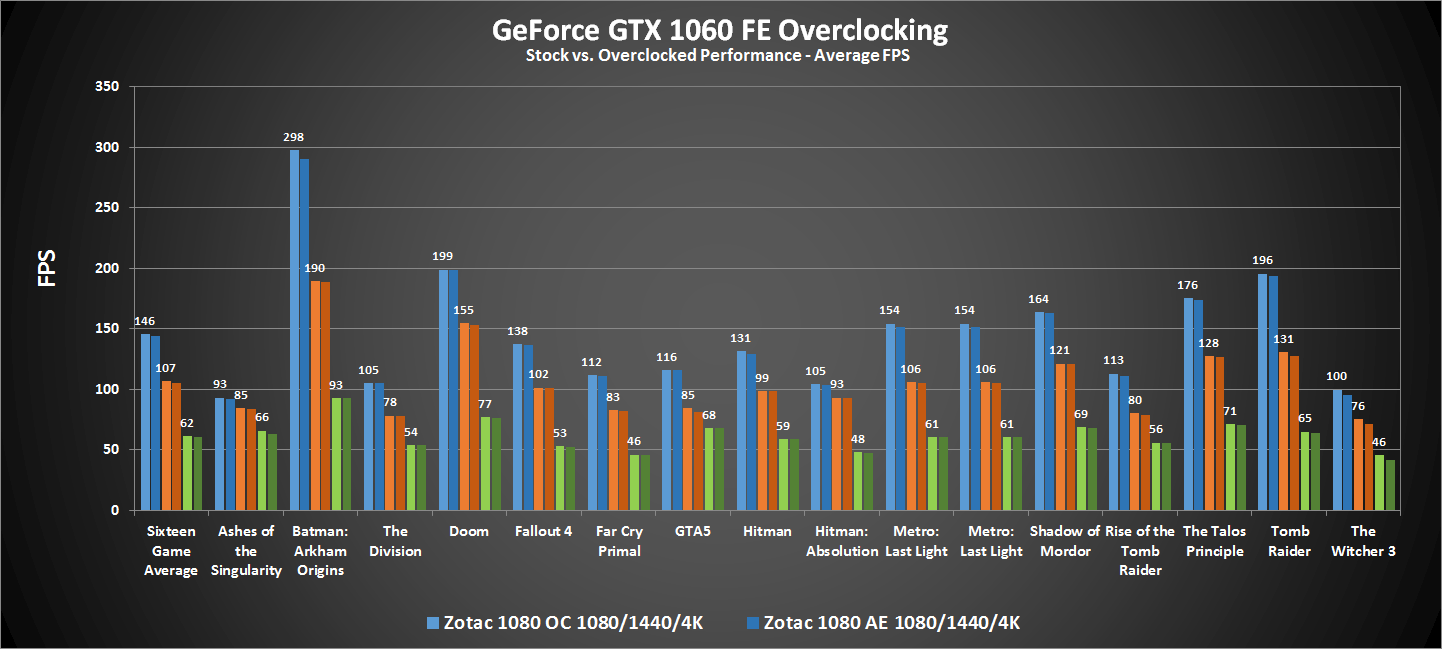
Here's the thing: Despite supposedly higher clocks on both the GPU core and the GDDR5X, in practice the additional overclocking didn't really help that much. Utilities show the GDDR5X at 5702MHz (11.4 GT/s effective), but outside of The Witcher 3, nearly all of the results are within two percent of the factory overclocked score. That's great news for people that just want a fast card that works without any additional elbow grease, but disappointing if you were hoping to see substantially higher end-user overclocks. YMMV, naturally.
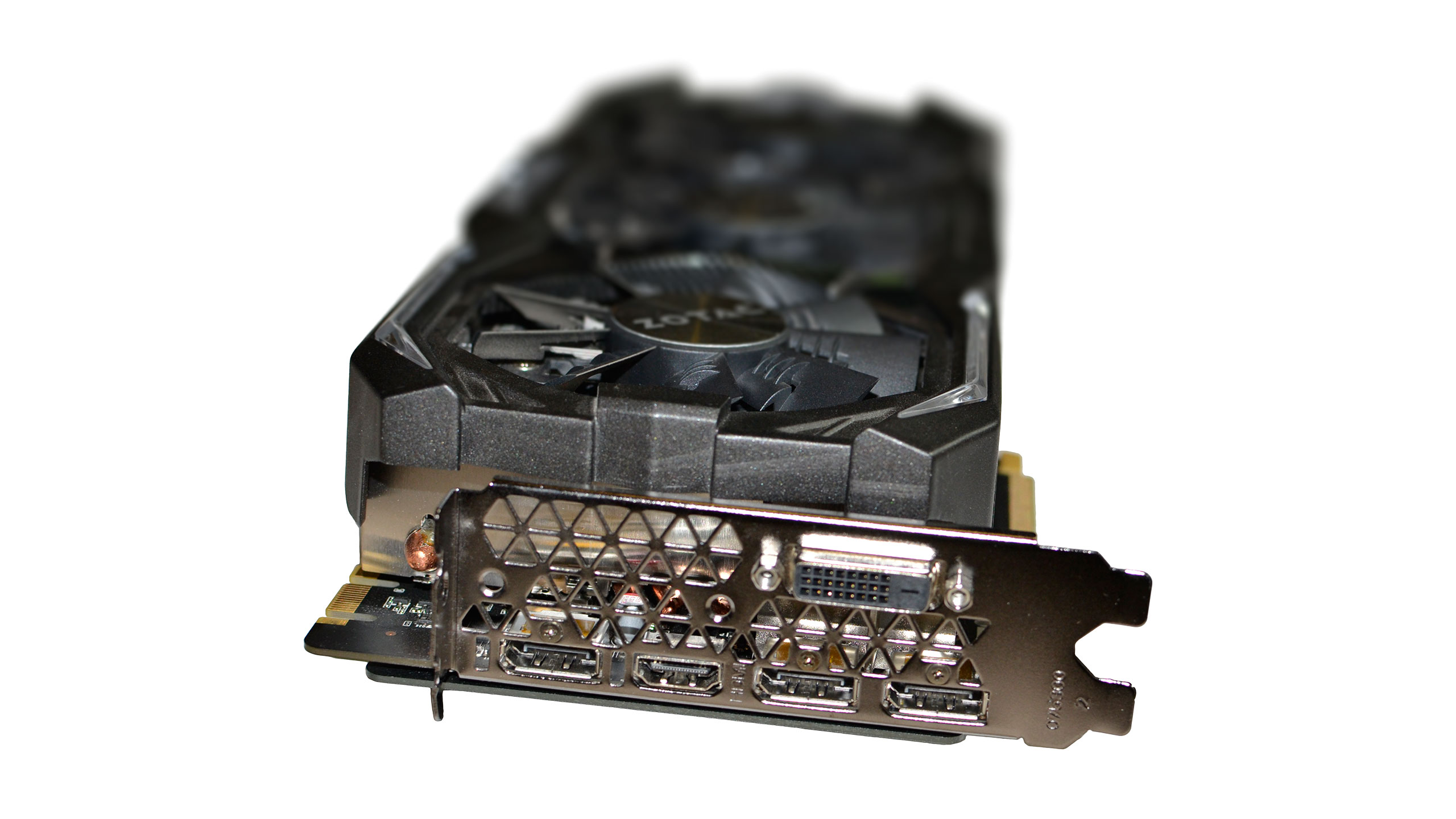
Here's your pink slip
I'm of two different mindsets when it comes to Zotac's Amp Extreme line of graphics cards. On the one hand, I love the fact that they've basically maxed out performance and taken much of the legwork out of buying a top-end graphics card. If you're simply looking for the fastest GTX 1080 card on the planet, chances are good that the factory model Amp Extreme will be close enough for all practical purposes. It runs fast, it stays cool, and it hardly makes any noise (compared to the other fans in my system). The card also has some new bling, courtesy of Zotac's multi-colored Spectra lighting—you can adjust the color using Zotac's FireStorm utility, which also provides overclocking support, VBIOS flashing, and a variety of other useful tools.
On the other hand, this is a bit like swatting a fly with a sledgehammer. Yes, the fly is dead, but the guts are splattered around the house now—try to be careful where you swing that thing and try not to hurt anyone in the process! The fact is, the Amp Extreme is so massive that a lot of cases can't even hold the card, and even the Cooler Master Storm Trooper case I use for my testbed is a bit tight. There's also some distinct sag (about half an inch) at the back of the card, even with the hefty metal backplate. If I were leaving the GPU installed on a permanent basis, I'd be inclined to add some form of support to the card, just to make sure the PCIe slot and motherboard don't get damaged over time (and to keep the card from resting on whatever expansion card sits below it).
There's also the matter of pricing. The MSRP is for the Amp Extreme $720, but right now demand appears to have pushed pricing up quite a bit. The card is available at Amazon and Newegg, among other places, but while other GTX 1080 cards have at least fallen below the $700 Founders Edition mark, the Amp Extreme costs over $800. Long-term, it should eventually sell at or below MSRP, but it might take a while to get there.
If you have a large case and are looking for the beastliest graphics card around (sans liquid cooling, perhaps), and you don't mind taking up three expansion slots of space, let me introduce you to Big Bertha. She'll grab hold of your games and give them a good whooping, crushing frame rates and enemies alike in the process. You might find yourself a little wobbly in the knees afterward, and mind your feet on the dance floor, but damn if she isn't a lot of fun!
Big, bold, and beautiful, the Zotac 1080 Amp Extreme is literally the 800 pound gorilla of graphics cards.
Jarred's love of computers dates back to the dark ages when his dad brought home a DOS 2.3 PC and he left his C-64 behind. He eventually built his first custom PC in 1990 with a 286 12MHz, only to discover it was already woefully outdated when Wing Commander was released a few months later. He holds a BS in Computer Science from Brigham Young University and has been working as a tech journalist since 2004, writing for AnandTech, Maximum PC, and PC Gamer. From the first S3 Virge '3D decelerators' to today's GPUs, Jarred keeps up with all the latest graphics trends and is the one to ask about game performance.
